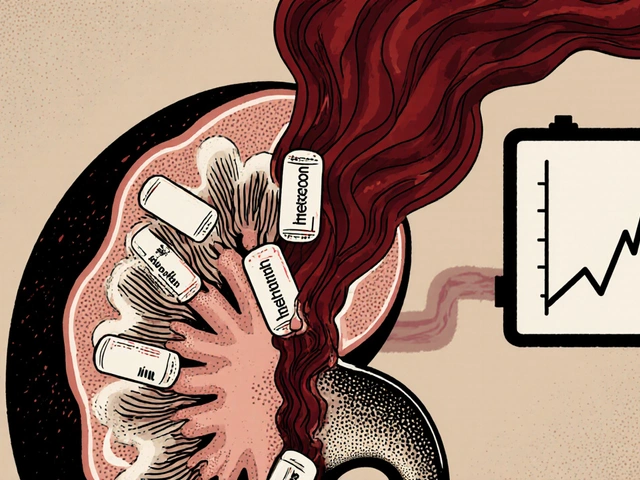Future of Anticoagulants: Safer Drugs and Smarter Monitoring
Bleeding remains the main worry with blood thinners. The next wave of anticoagulants aims to protect you from clots while cutting that bleeding risk — and some of those drugs are already in late-stage trials. If you or someone you care for uses anticoagulants, this is the practical update you want.
Why today's options still leave gaps
Direct oral anticoagulants (DOACs) like apixaban and rivaroxaban beat warfarin for ease and fewer interactions. Still, they aren’t perfect. People with severe kidney disease, some cancer patients, and those on multiple drugs can face higher risks. Reversal options exist — idarucizumab for dabigatran and andexanet alfa for factor Xa inhibitors — but cost and availability vary. Also, some clinicians want better tests to measure drug levels in real time.
What to expect next
Several promising trends could change everyday care:
- Factor XI/XIa inhibitors: These target a different step in clotting. Early and mid-stage trials (for drugs like milvexian and asundexian) show similar protection from stroke with less major bleeding. That could mean safer long-term use, especially in older adults.
- Monoclonal antibodies & antisense therapies: Longer-acting medicines that suppress factor XI are being tested. They may work well for patients who struggle with daily pills or have adherence issues.
- Better reversal tools: New universal reversal agents are in development to quickly undo multiple types of anticoagulants. Faster, cheaper reversal could make doctors more comfortable prescribing newer drugs.
- Personalized dosing and monitoring: Expect more point-of-care tests that measure drug activity, not just INR. That means tailored doses for body weight, kidney function, or interacting medicines — fewer surprises and less trial-and-error.
- Focus on access and cost: New drugs often start pricey. Watch for generic DOACs and payer coverage changes over the next few years that will influence real-world use.
What does this mean for you? If you’re stable on a current anticoagulant, don’t switch without talking to your doctor. But if you face high bleeding risk, frequent interactions, or poor tolerance, ask about clinical trials or newer options. Bring specifics: your kidney function, other meds, and any recent bleeds.
Researchers are moving from one-size-fits-all blood thinners toward options that match a patient’s needs and risks. That will cut emergency bleeds and give doctors more tools. Keep an eye on FDA approvals and guideline updates over the next two to five years — and have a clear talk with your clinician about what’s right for you.

Curious about the future of anticoagulation therapy and whether rivaroxaban will keep its spot among top blood thinners? This article dives deep into how rivaroxaban stacks up against newer treatments, what science is saying about its future, and what patients and doctors need to know. You'll get real-world tips, stats, and honest talk about risks and rewards—no sugarcoating, just clear facts.
Continue Reading





